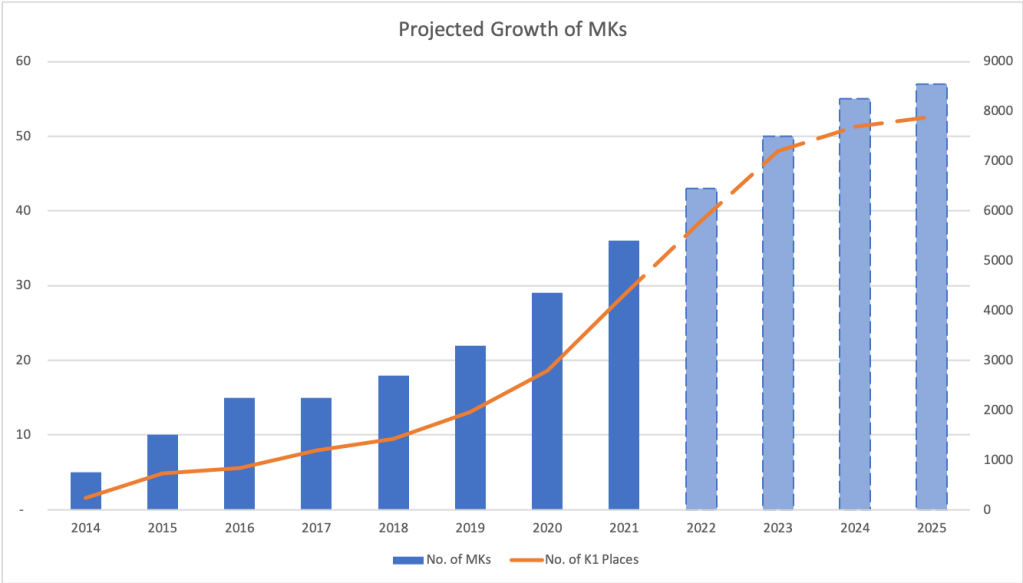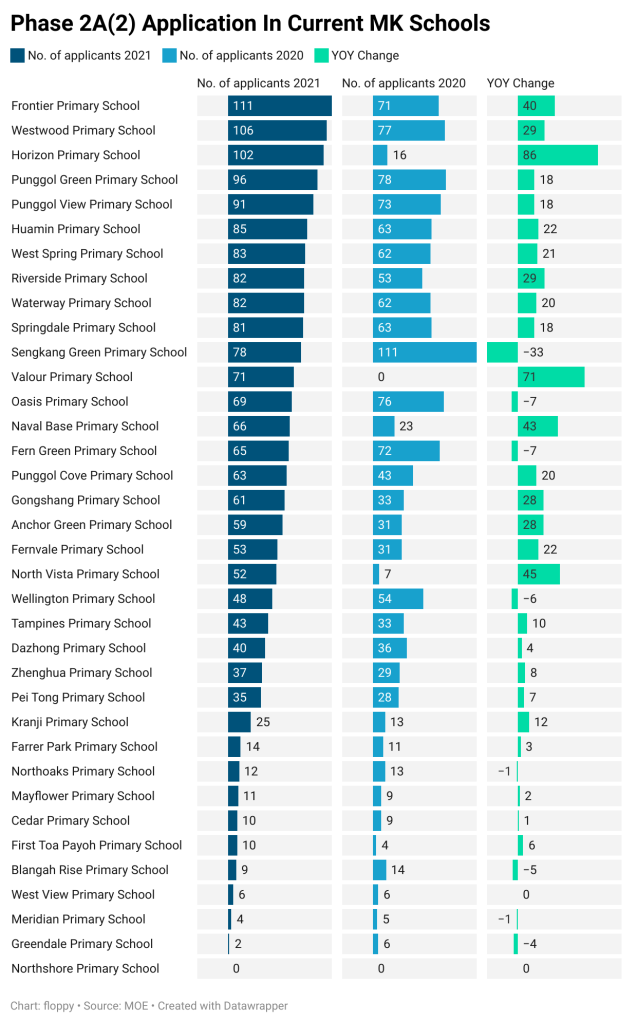While waiting for the latest Phase 2C update, we will be taking a look at the latest disrupter to the Primary 1 (P1) Registration Exercise – the MOE Kindergarten (MK).
MK is the Ministry of Education (MOE) first foray into preschool education with a stated aim of providing quality and affordable kindergarten education to Singapore Citizens and Permanent Residents. It began operations in 2014 with 5 centres co-located in 5 primary schools (Blangah Rise Primary School, Dazhong Primary School, Farrer Park Primary School, Punggol View Primary School and Tampines Primary School). Since then, it has grown rapidly to a total of 36 MKs today.
The original target, as stated by Prime Minister Lee during his 2017 National Day Rally, was to establish 50 MKs by 2023. Subsequently, MOE announced a planned expansion of 60 MKs by 2025 to provide parents with more choices for quality and affordable pre-school places. The following graph charts the growth of MK since 2014.

In November 2017, MOE announced a pilot programme for MK whereby MK children will be eligible for Phase 2A(2) admission to their respective primary schools that the MK is co-located in. The programme started with 12 MKs co-located with primary schools but had since expanded to all MKs. This new policy could result in MK disrupting the entire P1 Registration Exercise! The impact that the policy could create would likely be felt in the subsequent phases, notably Phase 2C and Phase 2CS.
In response to queries from The Straits Times, MOE had said that more than 70% of Kindergarten 2 In response to queries from The Straits Times, MOE had said that more than 70% of Kindergarten 2 children graduating from MK this year registered for a place at the affiliated primary school including 43% who registered under Phase 2A(2). That works out to about 1,460 K2 children from the 36 MKs (about 60.5% of the 36 MK schools) Phase 2A(2) applications. The breakdown of the number of Phase 2A(2) applicants in the 36 MK schools as compared to 2020 is as shown in the chart below.

If we look at the share of K2 children graduating from MK this year against the total number of applicants in Phase 2A(A), MK already has a sizeable share of 29.4%. Once all 57 MKs are setup by 2025, close to a third (31.5%)1 of our primary schools will have a co-located MK. If the proportion of children graduating from MK and registering for a place at the affiliated primary school (43%) holds true, we could be looking at about 3,400 MK children2 registering for Phase 2A(2) in 2026. That’s an additional 1,900 MK children3 to this year’s total Phase 2A(2) applicants. In 2026, we could be looking at 6,900 Phase 2A(2) applicants4 of which 49.1% are made up of MK children5. That’s a big f**king deal!
MK ongoing developments should not be overlooked by future participants in the P1 Registration Exercise. The ramifications in terms of options and availability once places are taken up by MK children in Phase 2A(2) are enormous. With fewer places left in the remaining phases, and fewer places in the alternatives provided by the MK primary schools, it may not be worth the risk to ballot for a popular school that’s 3 or more times oversubscribed. One may find themselves having to ballot in Phase 2C, and again in Phase 2CS. In the worst case scenario, one may even be posted to a “nearby” school with vacancies that is not of one’s choosing.
On the other hand, for parents aiming for one of the MK primary schools, they may have to consider enrolling in MK so as to be eligible for Phase 2A(2) instead of waiting till Phase 2C where the remaining places are lesser and odds are lower.
[1] 57 MKs / 181 schools = 31.5%
[2] 7,900 MK children x 43% = 3,397 MK children
[3] 3,397 MK children – 1,462 MK children = 1,935 MK children
[4] 4,978 children + 1,935 MK children = 6,913 children
[5] 3,397 MK children / 6,913 children = 49.1%